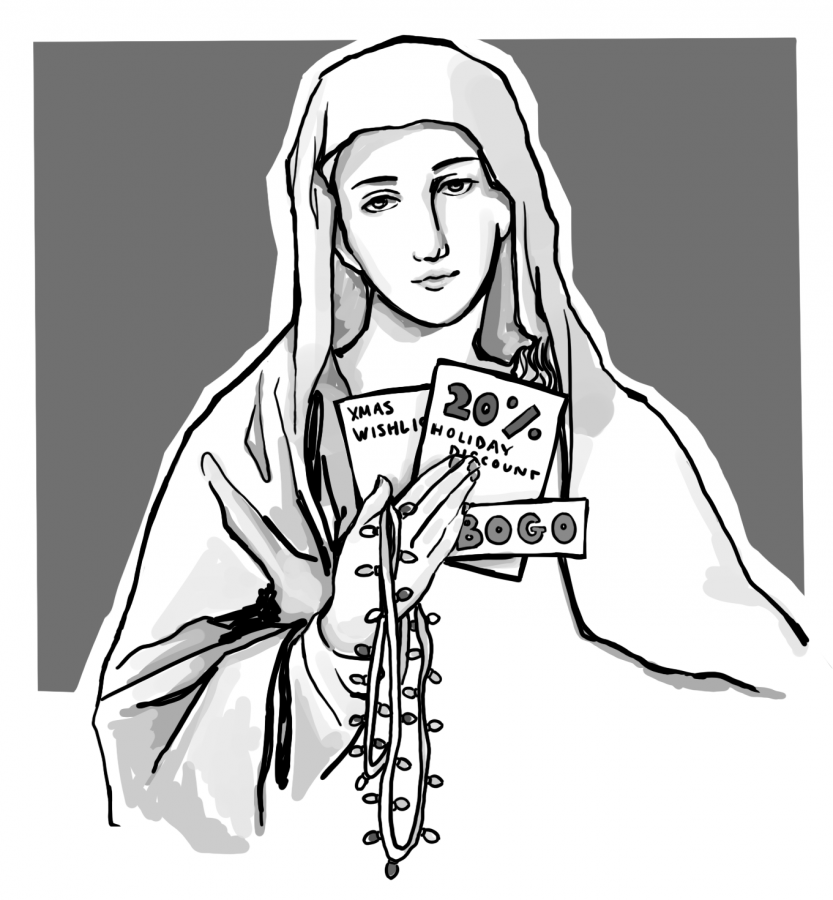How Music Forms the Holidays
December 14, 2017
Michael Bublé is a holiday god in my family. His sultry voice is played 24/7 from November 1 to December 25, his rendition of “Holly Jolly Christmas” steadily hyping us up for the one day of the year when we can open gifts and celebrate being together as a family.
The quintessential holiday cheer, accompanied by dancing snowmen and fake Santas at the mall, would feel incomplete without the adornment of our beloved Christmas carols that play in the background to set the wintery mood. Music helps to drive the Christmas cheer and help us get through the dark 60 degree California winter. Through the years, carols have steadily lost their initial religious meanings and are simply sung to spread Christmas cheer. The holiday is still very much a celebration of the birth of Jesus Christ but has also expanded its meaning as day that celebrates family and good cheer, allowing people across the world to celebrate Christmas without the religious context.
The introduction of Christmas Carols to the United States can be traced back to Victorian England in the mid 1800s, from the marriage between Prince Albert and Queen Victoria. Though they were much more based around christianity, their unity helped provide the basis of the Christmas Carols we know today, leading to the creation of dozens of classic Christmas songs such as “Silent Night” and “O Holy Night”. During the Christmas season, the songs spread to every household with the introduction of door-to-door caroling, including every family in the spirit of Christmas.
Carols proved to be essential to the mood of the people during the Great Depression in America. It was often considered the “golden age of holiday music” because of how new technology such as the radio helped to popularize new Christmas tunes. The religious meanings of the songs were shed away and were sung to raise the spirits of the families who had been hit by the economic crash. Christmas carols were adapted to more appealing musical styles such as jazz, musicians breaking away from the traditional hymns while still maintaining the Christmas spirit.
Today, in an era of consumerism, local shoppings malls have used Christmas to advance their sales and to entice individuals to use their money for the holidays. Businesses have fed off the generous and joyful feeling that people feel and have used the beloved Christmas carols to entice shoppers to spend more. The American Marketing Association found that when stores play slower and somber Christmas music the shoppers slowed down and spent 32% more. In another trial, they found that the louder the music volume, the less time people think has passed. Because Christmas music has become so ubiquitous, companies play popular carols to make their shoppers feel nostalgic while shopping and therefore happier.
Despite the fact that I am aware of companies preying on my Christmas spirit, it hasn’t stopped me from playing Josh Groban’s Christmas album on repeat when December arrives. Christmas carols are an essential part of Christmas cheer. The last Christmas that I ever spent with my grandfather, he belted out “The First Noel” after drinking too much whiskey and then promptly fell asleep for the rest of the night. That song can’t help but coax tears to my eyes whenever I hear it and I know that it reminds my family of him whenever we hear it on the radio. Christmas carols mean something different to everyone which is what makes them so special. As the years go by, the Christmas carols are played earlier and earlier with the intent of having shoppers spend more. Big businesses have dominated the holiday and like most traditions, Christmas has fallen to consumerism but I know that the songs will always have a special place in my holiday heart.





